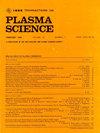天蝎座直线感应加速器的进一步束流分解模拟
IF 1.3
4区 物理与天体物理
Q3 PHYSICS, FLUIDS & PLASMAS
引用次数: 0
摘要
用于闪光射线照相的线性感应加速器(LIAs)中的光束分裂(BBU)存在问题,因为高频光束运动会模糊源点,从而降低分辨率。BBU可以被任何频率与电池模式共振一致的射频源激发。放大直接取决于电池设计的细节,并在操作中被用于电子束传输的螺线管磁场抑制。以前的工作研究了射频、波束头上升时间或螺旋运动激励的BBU。在本文中,我们将这些研究扩展到噪声激励,发现它可以增长到更低的振幅。本文章由计算机程序翻译,如有差异,请以英文原文为准。
Further Beam Breakup Simulations for the Scorpius Linear Induction Accelerator
Beam breakup (BBU) in linear induction accelerators (LIAs) used for flash radiography is problematic because the high-frequency beam motion can blur the source spot, thereby degrading resolution. BBU can be excited by any source of RF with frequencies coinciding with cell mode resonances. Amplification depends directly on details of cell design and is suppressed in operation by the solenoidal magnetic field used for transport of the electron beam. Previous work has studied BBU excited by RF, beam head rise time, or corkscrew motion. In this article, we extend these investigations to excitation by noise, finding that to grow to much lower amplitude.
求助全文
通过发布文献求助,成功后即可免费获取论文全文。
去求助
来源期刊

IEEE Transactions on Plasma Science
物理-物理:流体与等离子体
CiteScore
3.00
自引率
20.00%
发文量
538
审稿时长
3.8 months
期刊介绍:
The scope covers all aspects of the theory and application of plasma science. It includes the following areas: magnetohydrodynamics; thermionics and plasma diodes; basic plasma phenomena; gaseous electronics; microwave/plasma interaction; electron, ion, and plasma sources; space plasmas; intense electron and ion beams; laser-plasma interactions; plasma diagnostics; plasma chemistry and processing; solid-state plasmas; plasma heating; plasma for controlled fusion research; high energy density plasmas; industrial/commercial applications of plasma physics; plasma waves and instabilities; and high power microwave and submillimeter wave generation.
 求助内容:
求助内容: 应助结果提醒方式:
应助结果提醒方式:


